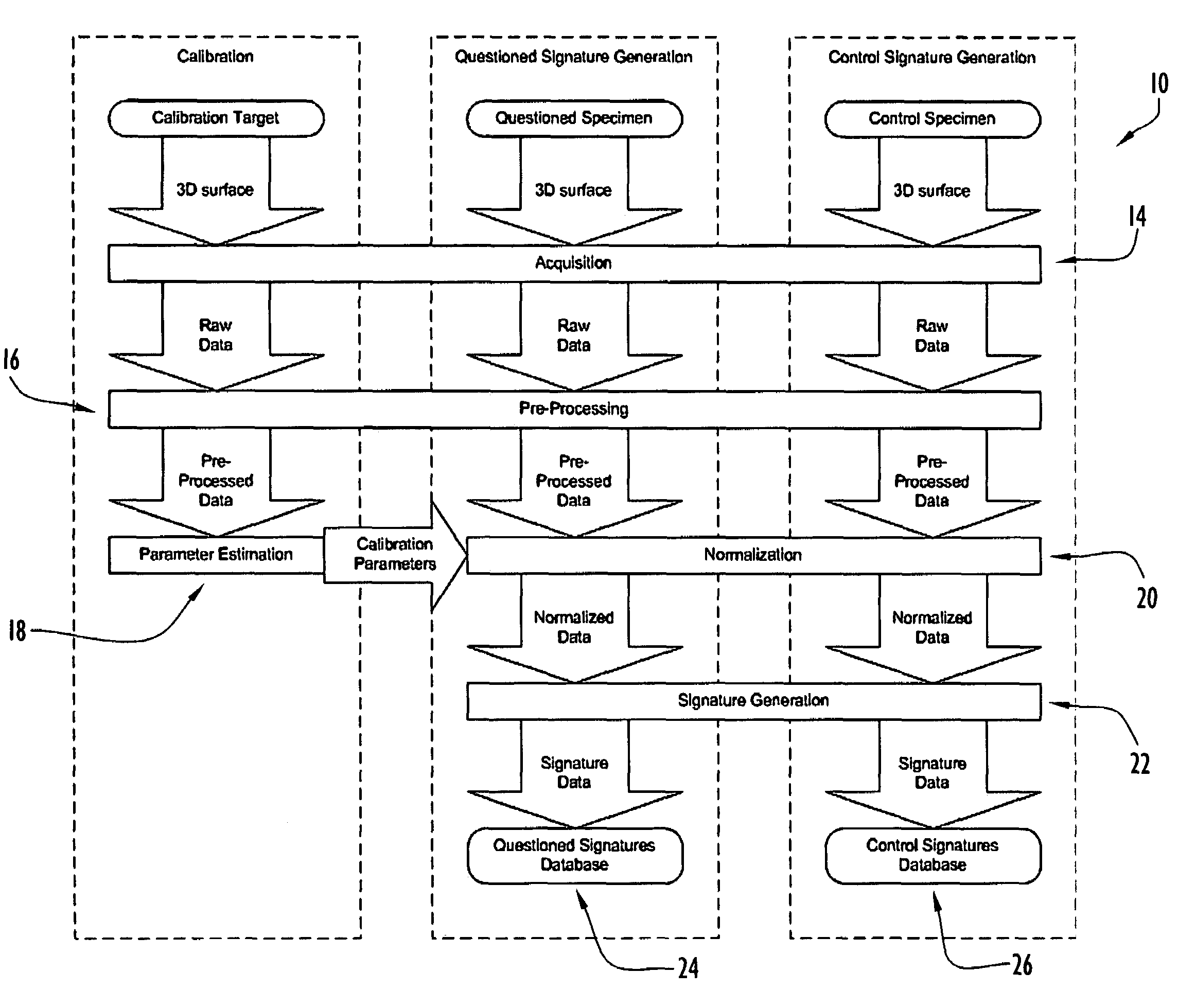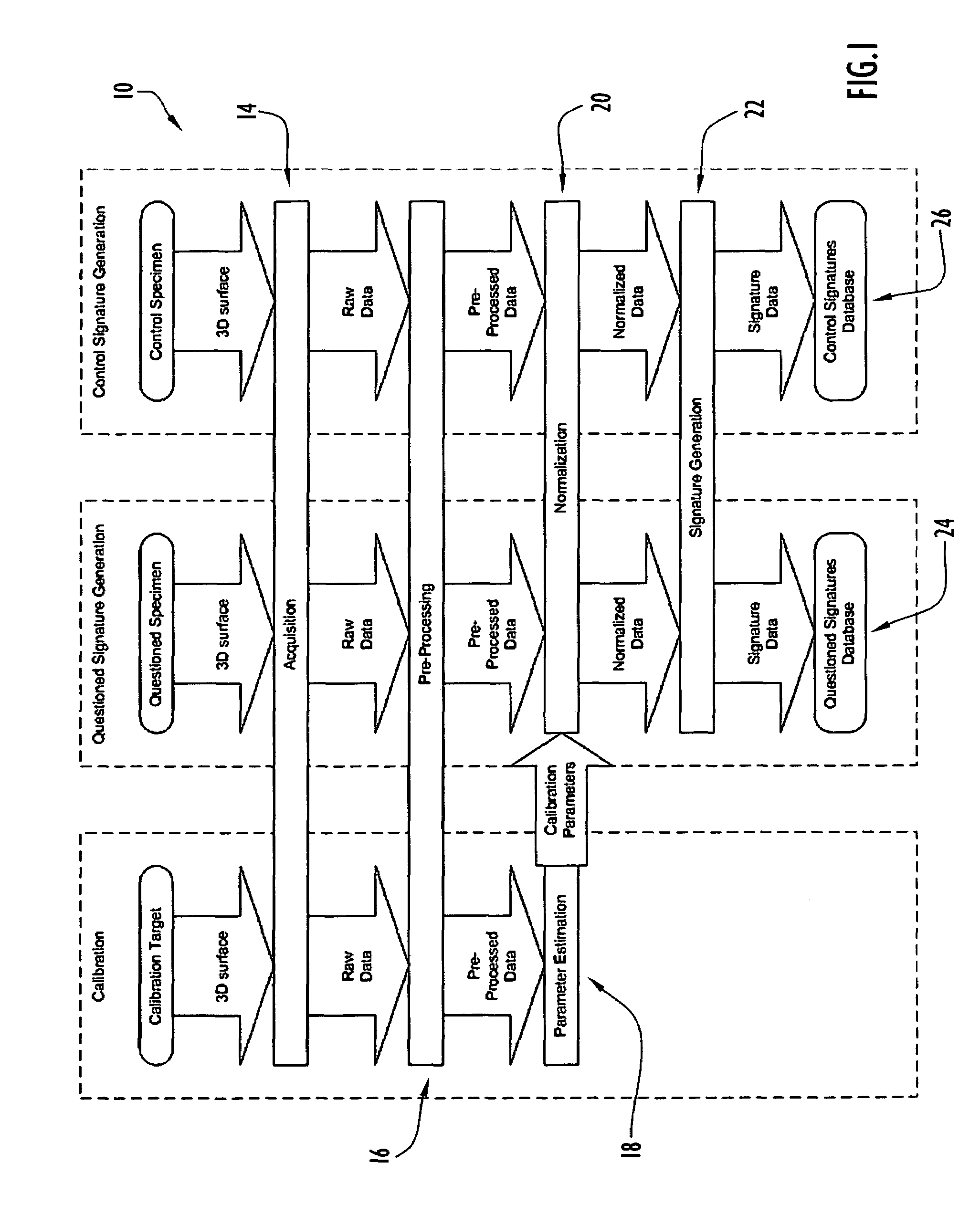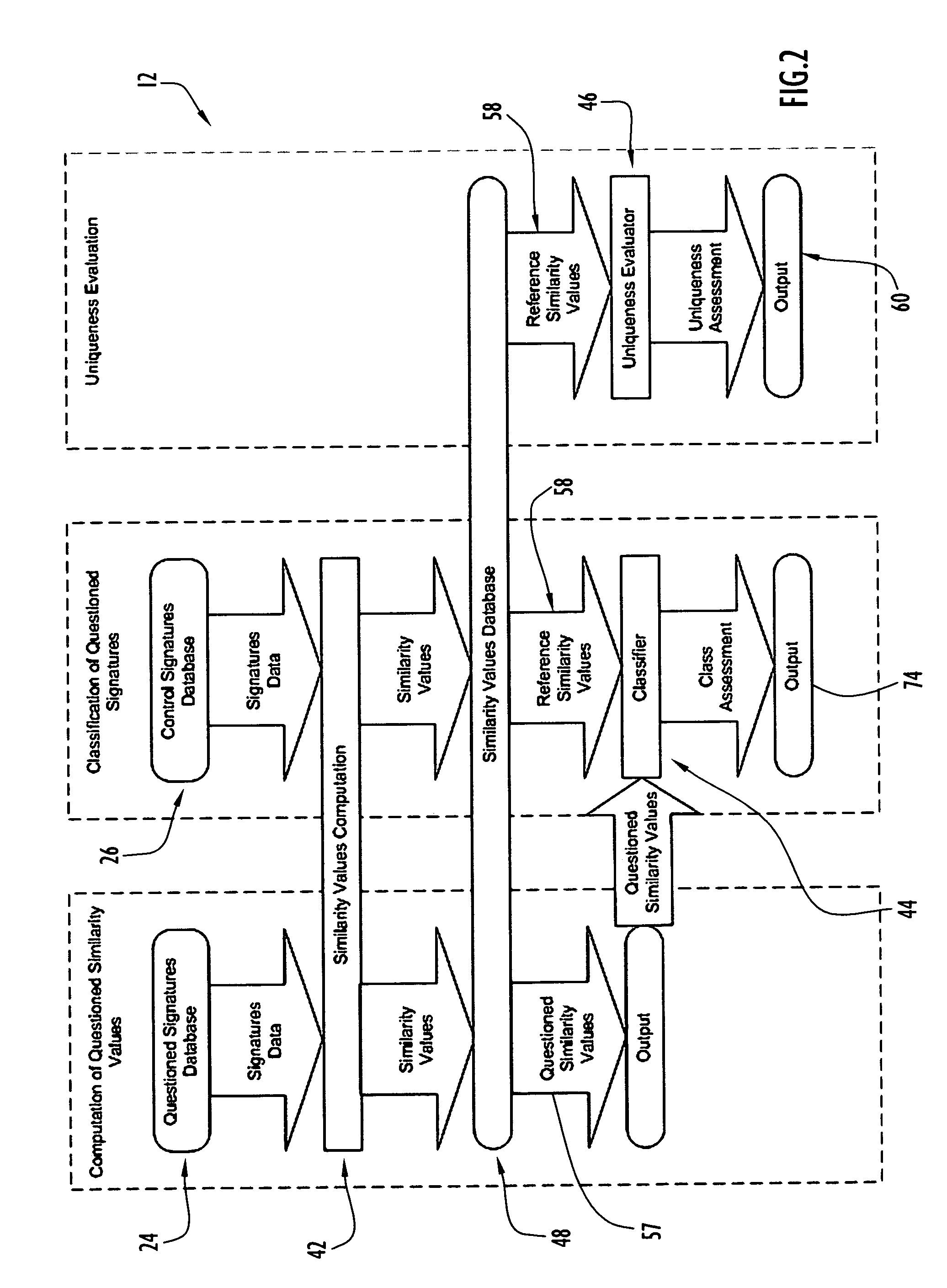Automated system and method for tool mark analysis
a tool mark and automatic system technology, applied in the field of automatic acquisition and comparison of tool mark data, can solve the problems of tool mark examiners being unable to quantify their level of certainty or the probability of making an error-prone conclusion, and mark may present many depth or elevational variances
- Summary
- Abstract
- Description
- Claims
- Application Information
AI Technical Summary
Benefits of technology
Problems solved by technology
Method used
Image
Examples
Embodiment Construction
[0064]The automated system for tool mark analysis and the method for tool mark analysis described herein are designed to perform automated acquisition and comparison of tool mark data using 3D information in an objective, unbiased manner. The automated system and method for tool mark analysis involves the characterization of tool marks as 3D objects and the use of statistical methodologies applied to a well-defined similarity metric to quantify the statistical difference between known matching and known non-matching tool marks. The automated system and method for tool mark analysis are capable of providing a numerical value reflecting the degree of similarity between two tool marks under comparison, a statistically-based assessment of the likelihood that a particular tool created a pair of tool marks under consideration, and / or an assessment of the uniqueness of the tool marks of a particular class. Various features of the system and method for tool mark analysis involve high level ...
PUM
 Login to View More
Login to View More Abstract
Description
Claims
Application Information
 Login to View More
Login to View More - R&D
- Intellectual Property
- Life Sciences
- Materials
- Tech Scout
- Unparalleled Data Quality
- Higher Quality Content
- 60% Fewer Hallucinations
Browse by: Latest US Patents, China's latest patents, Technical Efficacy Thesaurus, Application Domain, Technology Topic, Popular Technical Reports.
© 2025 PatSnap. All rights reserved.Legal|Privacy policy|Modern Slavery Act Transparency Statement|Sitemap|About US| Contact US: help@patsnap.com



